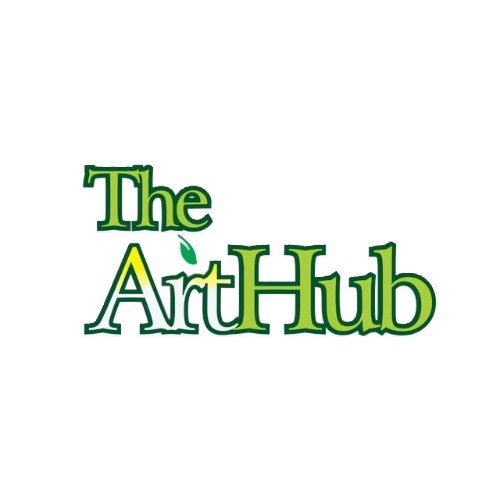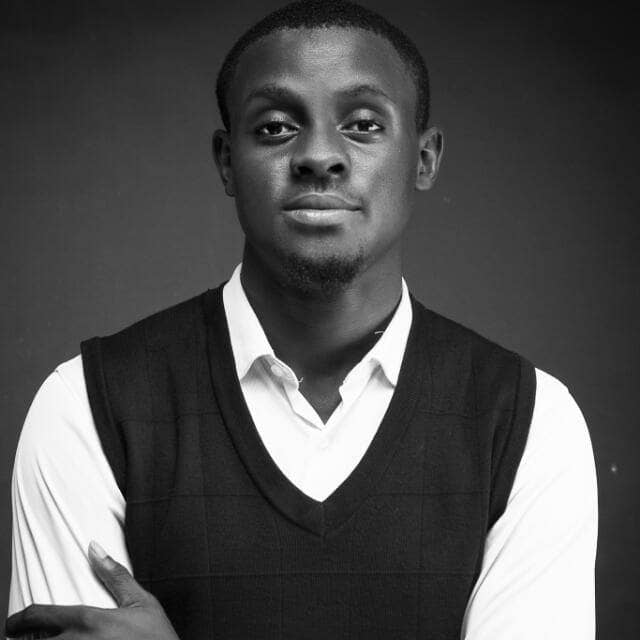‘Onobrakpeya is selling Agbarho-Otor, Niger Delta to the world… but gets no support’
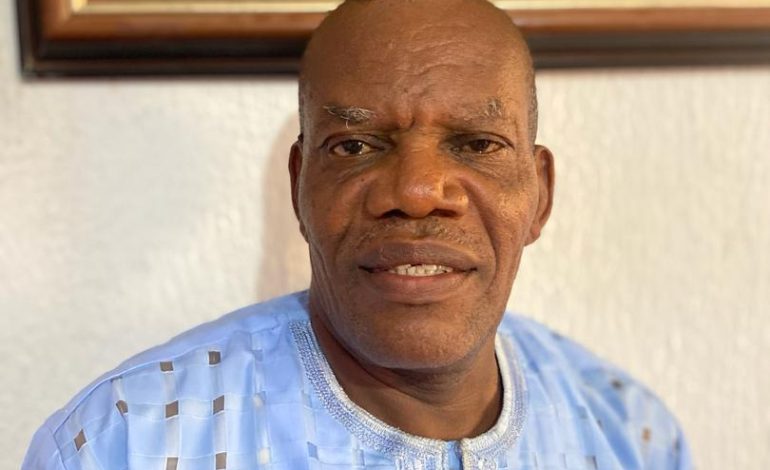
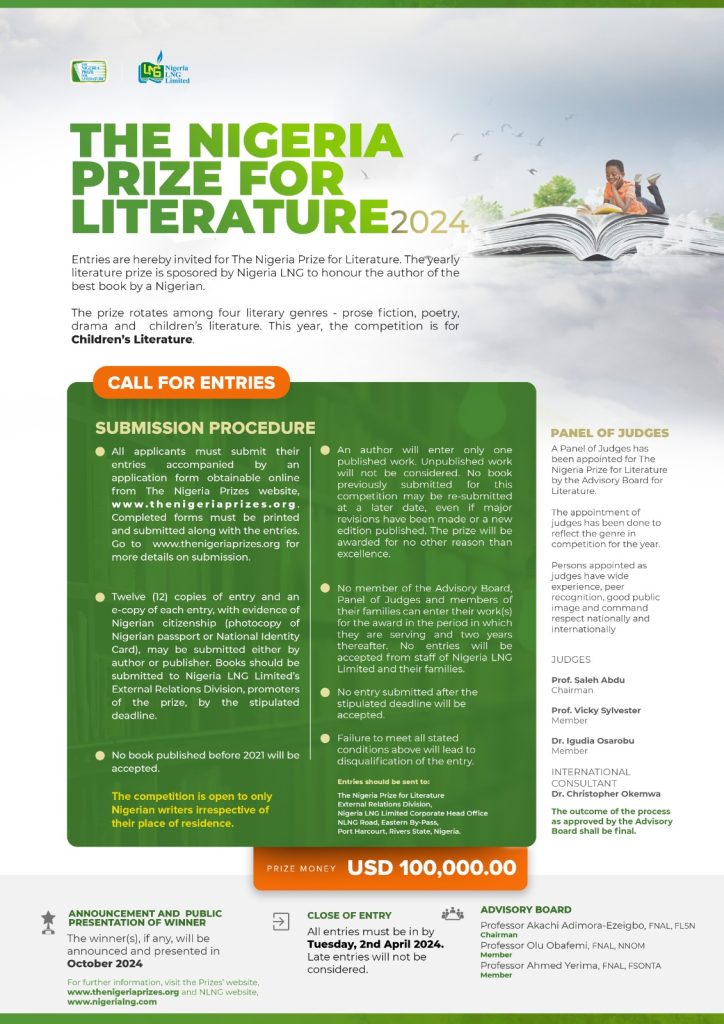
COUNTDOWN TO APRIL 2 SUBMISSION DEADLINE: ONE DAY TO GO!
* ‘Why is Delta State Govt., NDDC shy of supporting the Harmattan Workshop?’
Among Prof. Bruce Onobrakpeya’s proteges, perhaps Nse-Abasi Inyang stands out. He was Onobrakpeya’s secondary school student, became ‘apprenticed’ to him after secondary school and while study arts at Ahmadu Bello University, Zaria, where Onobrakpeya and the five artist ‘rebels’ also studied previously to upend Euro-centric idea of art in favour of authentic African art concepts. But Inyang had since come into his own art, but Onobrakpeya’s influence on his art, his dedication to the world famous Harmattan Workshop are unmistakable. At 65 Inyang will hold a solo exhibition that will mark a milestone 40 years of his art practice. In this interview with ANOTE AJELUOROU, Inyang explains it all
You were a guest at the 26th Harmattan Workshop in Agbarho-Otor, Delta State, this year. How did your relationship with Prof. Bruce Onobrakpeya develop?
I got admission into St. Gregory’s College, Lagos in 1972, where I met this great man, this icon called Bruce Onobrakpeya, who was our art teacher. Destiny was responsible for that. I could have gone to King’s College and other competing schools, in terms of brand. He was my teacher; I liked art and he took interest in me. So, I ran my secondary school course there from Form 1 to Upper 6. We were so close that he knew my parents who are late now, and my siblings. He took interest in me. He looked at my fingers, and I remember when he said I had hands for creativity, and my hands would be good as an engraver. Every long vacation, he would asked me to come and work with him, and he would give me some money, and until I entered the university, I was always working for him. It was a great feeling. Whether short or long break in the university, I was always welcomed, and I was learning, but more importantly then was the money as a student, because in our time, we needed extra money; we did vacation jobs to keep afloat.
I was always going to his studio during the holidays where I learnt every engraving tricks we have. I must tell you this, it almost backfired at me in the university, because they knew that he was my mentor, and all eyes were fixed on me. This was a boy under the tutelage of a master; so, what was he bringing to the table as a student? I was hiding it until my final year when I exploded. The external examiner from the University of Benin, Benin City, had to ask: “Is there another Bruce Onobrakpeya here?“ When she went to my section during my final year exhibition, I had a sculpture, and I had known a lot about printmaking, engraving, etching, carving and working on POP and so on, which I learnt in the hands of Prof. Onobrakpeya. Luckily for me, as I was rounding off my youths service, I saw a publication in the newspaper, and he said to me, “Iyang, if you must stay and practice and build your name, you must teach; it will give you time to practice.“
So I took to his style, and luckily for me, I picked up a teaching job at the Lagos State Polytechnic. Back then it was called School of Environmental Studies where they had fine arts as a department, as well as survey, estate management and architecture. Teaching there wasn’t very interesting, because it was a new school and a new department, compared to Yabatech that had built its reputation and status. So far so good; most of those I groomed went for their HND at Yabatech and they excelled. I have always worked with Bruce. Even when I was doing youths service, he still needed my services and I needed the training, until I had to leave when the demand was bigger as a lecturer. Till date, I still visit and we share ideas and a lot of things in common, constructive criticism and all that. He said I’m his child of art, which is not biological, and it was destiny. He could have been a lecturer at the University of Benin, University of Nigeria, Nsukka or Yabatech, but by his grace, he taught at St. Gregory’s College. My parents opted that I go there, and so far, he’s been a wonderful friend. He’s like a father that has replaced my biological father. He has been there for me.
In fact, I run errands for him too, which he sends me and he goes to sleep. He told me in 1998-99 that he had a workshop to jumpstart and I was the one who took letters to the University of Uyo to invite participants. It was late Prof. Idiong, whose daughter is the wife of the former governor, Udom Emmanuel. I took letters to her, and Ekanem, who was my lecturer at Ahmadu Bello University, Zaria, now an esteemed professor at the University of Uyo, and the late Usen, who was a lecturer in Uyo, to come for the art meet in 1998. I ran that errands for him and he couldn’t have sent anyone else because that was my state, and they knew me.
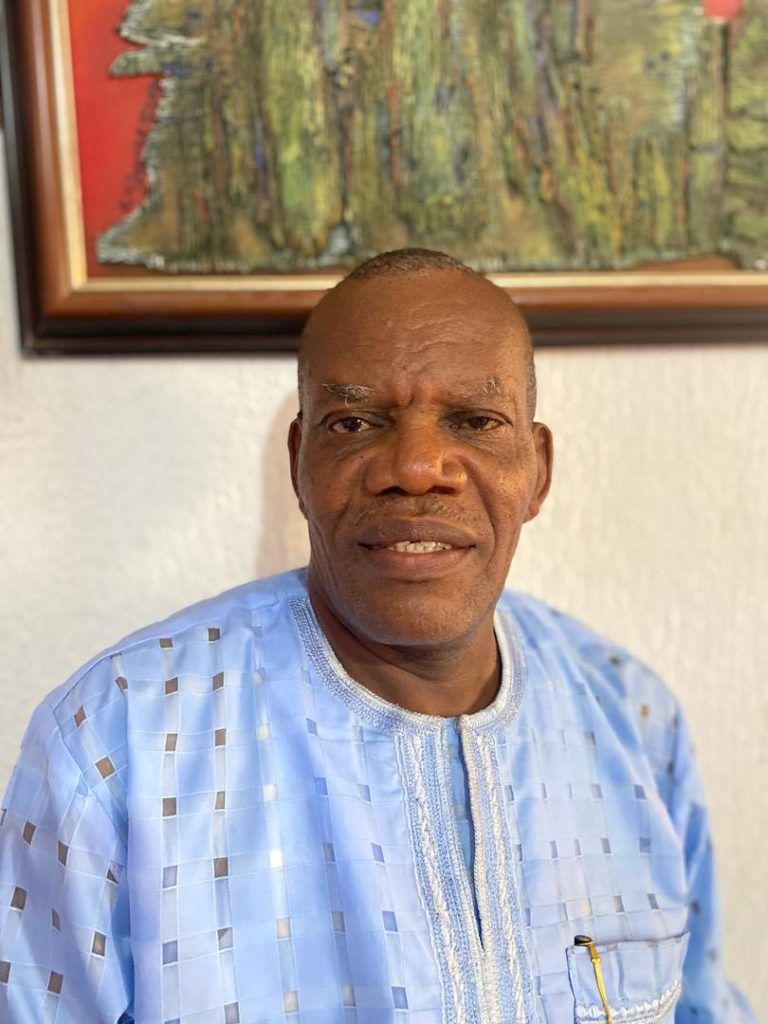
Nse-Abasi Inyang
From the art meet in 1998/98, and 26 years later, how has the Harmattan Workshop developed?
It’s amazing in the sense that you can see depths of growth and creativity. I abandoned it for too long; I should have been going there every two to three years, but I left for quite a long time and it was like that because I had an accident and I had to take care of myself for some time. Notwithstanding, it was quite too long. So far, it has been able to speak for itself, the edifice, the artists participating there, it has been amazing, and it has opened up a lot of consciousness in the creative industry. People go there to experiment and research things unimaginable and that’s the beauty. If this country had good people in governance, it should have been a UNESCO Heritage Centre by now. I said that on his birthday two years ago during Lagos Book and Art Festival (LABAF 2022) at Freedom Park. Whether we like it or not, the truth will come out, and we pray that someday it will come out and stay. When the correct history of creativity will be written in this country, we will know where to go to, because the place has exposed people. It started as informal, and everyday things are growing to an infinity level. That little mustard seed has grown into a big tree that you can’t even see the end of it’s fibrous roots.
People came from all over the world – Austria, Cote D’Ivoire, Benin, Congo this year as in previous years as well. It’s just because of the state of our nation, more would have been attracted to it. As a matter of fact, before we left, Prof. Onobrakpeya told me that a lot of people that were supposed to come, but for fear of insurgency they declined. So, art will thrive when the country is well settled, not in a comatose state like this where the country is suffering internal dislocation and you have a fractured economy. We saw how much it took this man to run that place – fuel, diesel, food, and the security of the people, and the community people.
What is NDDC doing? It’s an agency setup to develop that Niger Delta area. Why are they shy? What does it take? Go there, sponsor and build a hostel where people will stay. Onobrakpeya is selling that locality to the world. What is the minister of culture doing? Talk to UNESCO or people in arts outside the country to get enough artistic materials to flood the place. Must the people bribe, or go begging cap in hand? The bible says whatsoever is pure, we should concentrate on these things.
You said you went to the Harmattan Workshop this year to relax? As an artist, is that even possible?
Yes, but I still went into stone carving. You can’t easily get stones in Lagos, except in Ondo, Auchi and parts of Benin, and I must tell you, if you’re in a house where you pay rent, you can’t be using power driven tools like that because you will be disturbing the other tenants. I seized that advantage to carve stone. I could always do other works, but there, make all the noise for two weeks and it’s acceptable. So, I just went there, but I had accident. I was able to carve. I said after carving them, I would come home and finish them here.
You are Bruce’s artistic son, and in a lot of ways, you were first his student at St. Gregory’s, and a student of Fine Arts at ABU at the same department where he studied, and where he and some other Nigerian students rebelled against the white’s foreign interpretation of arts. With this background with him, how has your art benefited, evolved and possibly broken away from his? What is your own rebel art in all this?
We were the first Youth Corp Artists to exhibit in Lagos, Nigeria. There were five of us in 1989, namely myself Nse-Abasi Inyang, Paul Ejukorlem, Buhari Saibu, Noserime Rukeme and Innocent Odeka. That was in June, 1985, as we were rounding off service. The exhibition was the National Museum, Onikan, Lagos. When we came out, our focus was to create non-conventional art, and so we were tagged Ex-Officio. We were popular with that name. We were working with composite materials, discarded items and fusing them into art, and people saw the imaginative depth of our works. It was not just painting, but an impressionistic painting, something out of the blue.
Let me tell you one of those things that inspired me — the ‘Bull Head’ of Pablo Picasso. You know, it’s just a simple bicycle handlebar and the seat. We were of that thought that let us not just paint a drummer, but we can mould it. We would make artworks and inculcate metal into it, like one of us painted an artwork at the time Dele Giwa was killed, and he splashed a spread of aradite and office pins, and put an empty biro case there to show the blast of the crucibles of the letter bomb, and then poured yellow and gold, to show the golden life Giwa lived as a journalist. We were not just making regular works like you see in exhibitions; we were going out of the blues. Chief Arthur Mabnefo bought a lot of my works which he gave to UNESCO and other international agencies, like one titled ‘This Nation Must Not Fall,’ which was a hand holding the map of Nigeria, and the map was made in termite trodden wood to show decay, then, hanging on a rope, and I cut a part of it.
Wasn’t that work somewhat prophetic considering where the country currently is?
Yes, it was. This was my first solo exhibition. Mbanefo bought a lot of my works, like one titled ‘Duel’ that I made from coconut shells, but I added actual feathers and built up the neck and moulded it up with polythene which made it look like a quasi-sculptural piece.
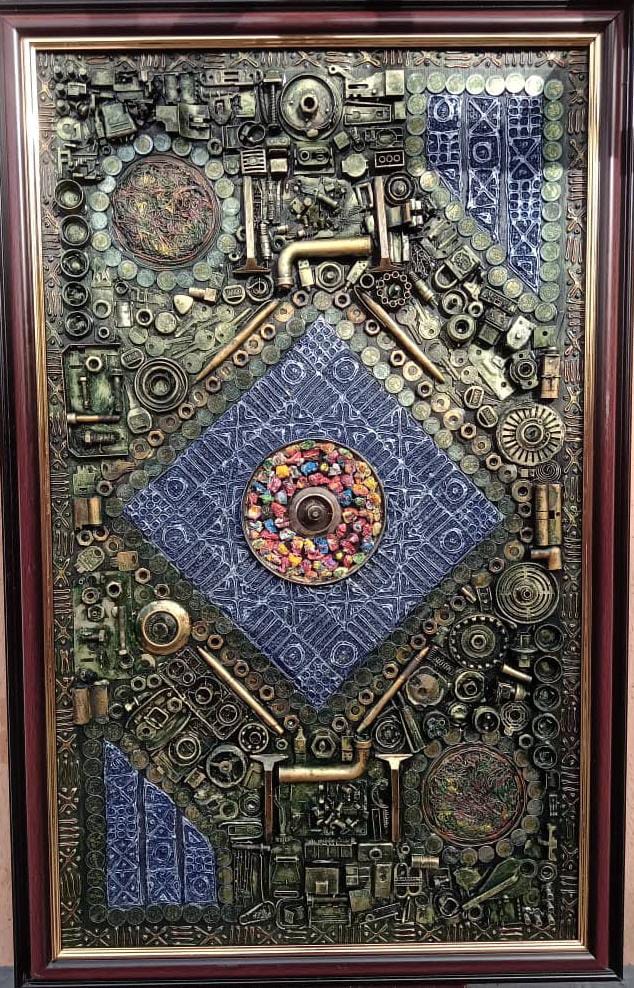
Inyang’s ‘Symphony’, a mixed media work
Let’s come back to ‘This Nation Must Not Fall’. Is the nation still standing 34 years after your prophetic work?
Yes, but it’s on the verge of falling, because in continuation of that sculpture, in my second solo exhibition, I titled one of the works, ‘The Dirge of a Nation.’ The late Chief Rashidi Gbadamosi opened that exhibition, and it was Nigeria, but bigger, with termite trodden wood, painted, and I moulded ants into it. One ant was the judiciary, one was military, and the other was the executive arm of government, and they were quite big, and they were eating up Nigeria, and when the journalist asked me about its meaning in front of the chairman, I said the bible says ‘righteousness exalts a nation but that Nigeria was coming down from its position of exaltation. Look at it today. What do you see?
Would you consider yourself a political artist?
Sometimes, whether we like it or not, the emotion must be political, in your mannerism, because you are living in that space. It will leave you or you can leave it, but if you’re living in a system where the country is dislocated, with a fractured economy, a dismembered society, a comatose situation, what do you expect? In those days, during World War II, there were artists in Europe who were painting in vibrant colours. They were expressions of war, although they were abstracts and impressionism. They painted their expressions and ideas. Any artist that cannot document the epoch of his time is not an artist that has any in-depth creativity, because those times will pass away, and it’s the documentation that will live to tell people that Nigeria went through this phase. The artist must be able to document. Why are you an artist if you’re not conceptualizing things?
When was your last exhibition and when do you hope to exhibit next?
My last exhibition was in 2022 at the National Museum, Onikan, Lagos and it was kind of a joint thing with Juliet Ezenwa-Pierce. I’m working towards a solo exhibition; that’s why I’m getting materials for it. I was able to sell some of my artworks which enabled me to buy more materials and fill up the space. It will be my 40 years of practising art, and I will be 65.
You just mentioned a fractured economy, a dismembered society and the things that are wrong with the Nigerian society today. As an artist, how are you responding to the malaise? Is this the best time for an artist or not?
Honestly, it’s not the best time for everybody since an artist is someone in that same space…
But they say artists thrive more during tragic situations, which readily provide them raw materials for their works…
Well, if you say so; I will answer you factually or truthfully that it’s a relative term, because many aren’t finding it easy. Bob Marley said when it rains, it doesn’t fall on just one man’s house. At times like this, there are others who are in their safe haven, and there are others who suffer, but for me, so far so good. And I think those who say that artists profit from tragedy, as it were, because it inspires them to want to document for the future, to create and express their minds and criticize the government in every manner they can. You could be on your own. You could be world famous, but with a high level of insecurity, no one is safe. Our Youth Corp Artist friend went into hiding when he did that Dele Giwa painting, because we told him SSS might come looking for him, because someone came to that exhibition and said, “who told us that he (Giwa) lived a golden life as a journalist?” That sent shivers down our spines as to why he said so. He was a government person.
